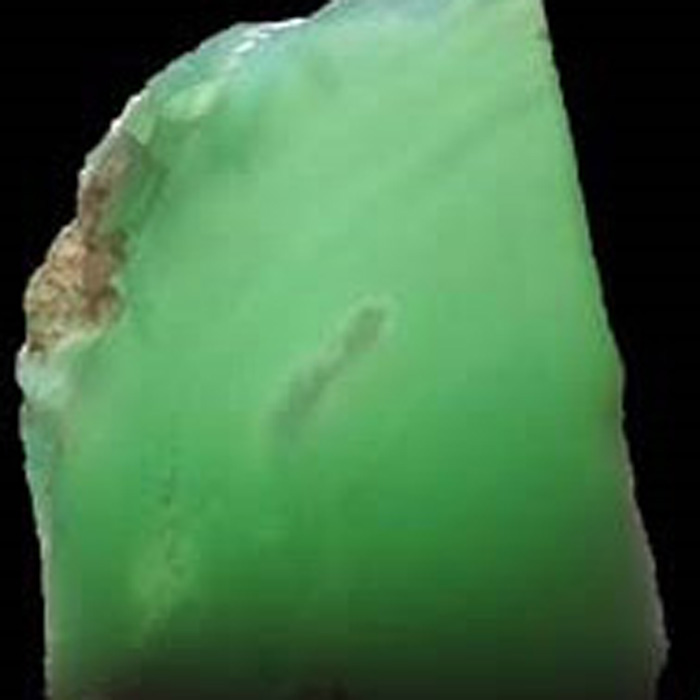Scientific Name: Variety of Chalcedony (itself a microcrystalline variety of quartz) with nickel oxides
Group: Silicates – tectosilicates
Chemical composition: SiO2
Colors: Apple green to leek-green; due to presence of nickel.
Hardness: 7
Formation: Hexagonal – trigonal crystal; Massive or microcrystalline form
Principal Sources: Poland; Australia; ; Russia; California, USA; Brazil.
Special Notes: Chrysoprase results from the deep weathering or lateritization of nickeliferous serpentinites or other ultramafic ophiolite rocks. In the Australian deposits, chrysoprase occurs as veins and nodules with brown goethite and other iron oxides in the magnesite-rich saprolite below an iron and silica cap.The name comes from Greek chrysos and prase, meaning ‘golden leek’.

